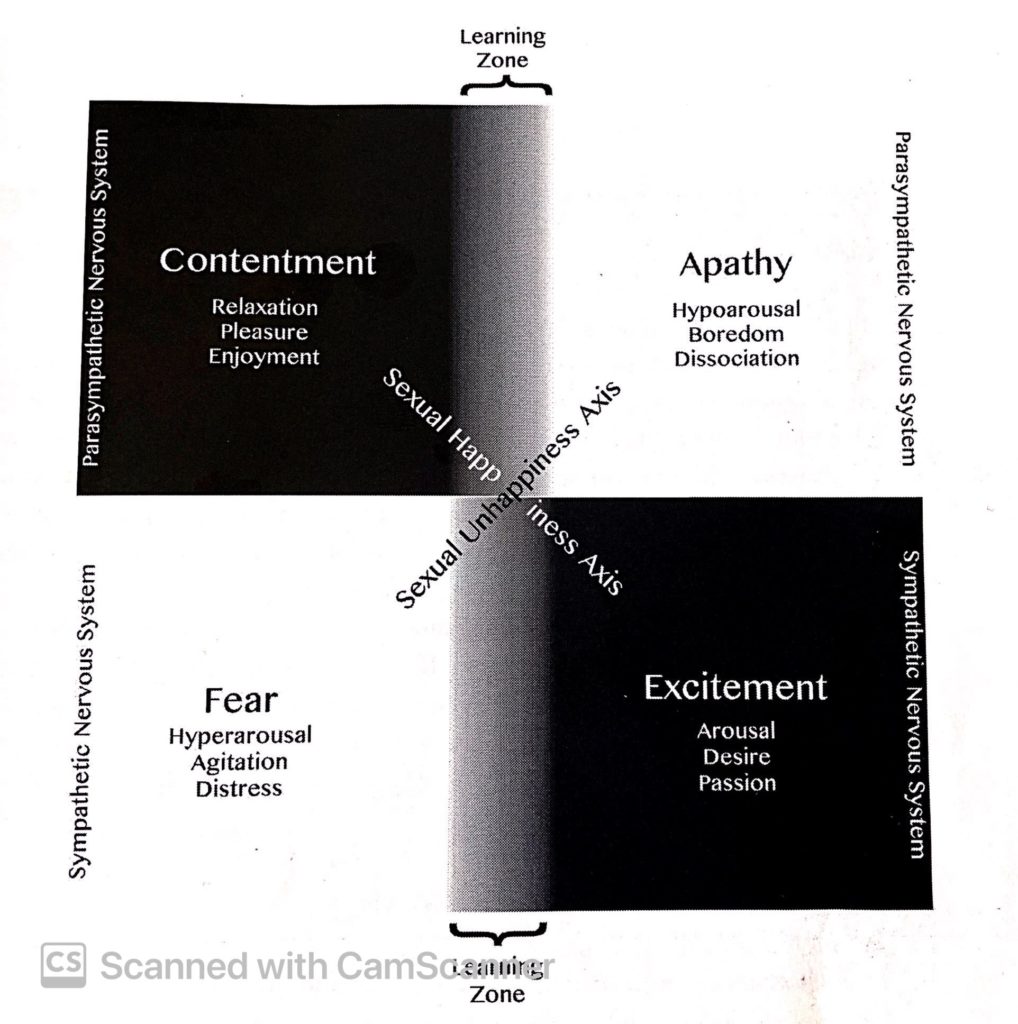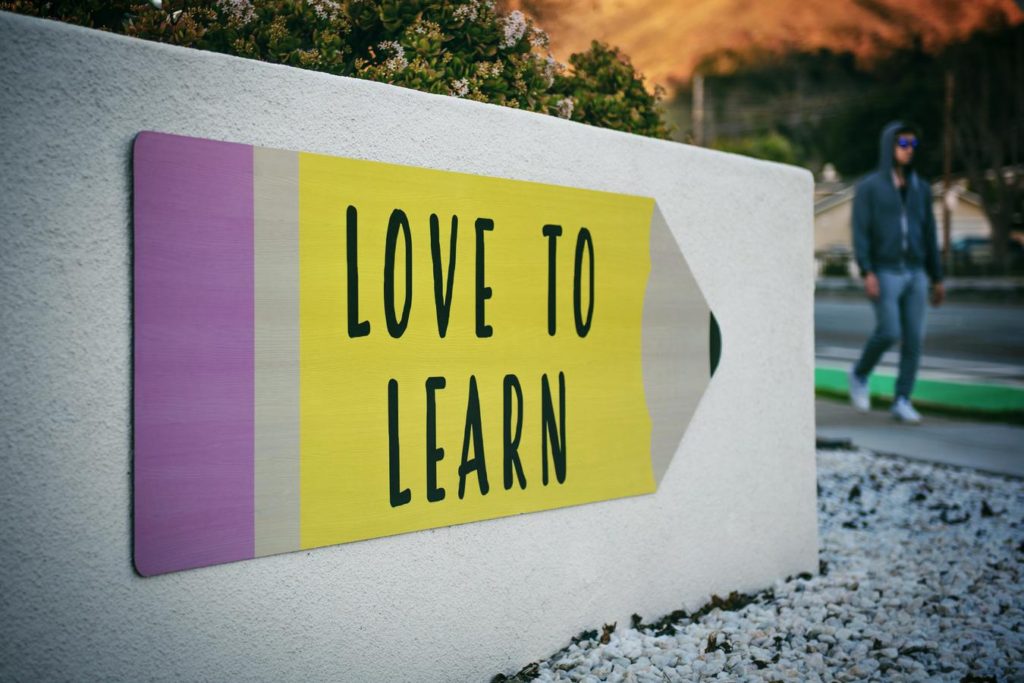When it comes to our sexuality, we often get so caught up in our end goal that we don’t stop to consider (and maybe even savor?) the process that gets us to that goal.
It’s always about getting to orgasm, never about savoring arousal.
It’s always about getting a big, firm erection; never about savoring the amazing array of sensations experienced with a soft cock.
It always about getting to penis-to-vagina penetration, never about the amazing wonderland of bodily sensations available when you do everything BUT that.
It’s always about achieving sexual healing – being HEALED once and for all; never about the process of unwinding one’s deeply laid conditionings and re-finding one’s personal truth – which can be an incredibly non-linear process, full of ups and downs, emotional rollercoaster-y in nature, spiritually chaotic at the very least and – in some of its darker moments – potentially isolating one in a whirlwind of confusion and uncertainty as one is forced to break free from one’s community (ie: family, church, spouse) that enforces and perpetuates the trauma in the first place.
When the process is hard, takes time, takes energy and takes the emotional fortitude of a Jedi, we can find ourselves really wanting to speed things up.
Let’s get it over with. Let’s get through it. Let’s just push a little harder, a little faster, so the intensity of the process is lessened.
While our modern day, workaholic, capitalistic, go-go-go culture would no doubt applaud that approach, us somatic sex educators are over here like,
When it comes to trauma, you have to work at the pace that your nervous system can handle. You’ve got to take time to integrate after each and every breakthrough before moving on to the next thing that needs your attention.
You. Cannot. Rush.
You. Cannot. Force it.
You don’t need to get THERE. You need to be right here.
And sometimes that “right here” is mired in a muck of emotional upheaval and distress, agitation, and discomfort. Pretty normal stuff.
So you gotta make sure that, as you pursue your healing, that you stay within what my school terms your “personal learning zone”.
A Word About Trauma
Trauma, my friends, is inextricably linked with your nervous system. Specifically, the part of your nervous system you have no control over, your autonomic nervous system.
Your autonomic nervous system has 2 parts: the sympathetic nervous system (SNS) and the parasympathetic nervous system (PNS). Together, these two systems regulate mood, the rate and force of your breath, your heartbeat, the relaxation or constriction of your sphincters, and your ability to access arousal, erection and orgasm.
When you’re faced with a threat, your sympathetic nervous system activates quickly and abruptly.
Before you even register a danger, your amygdala hijacks your shit and releases a cascade of powerful neurotransmitters and neurohormones, including cortisol and adrenaline. This happens before we ever even consciously realize there’s a danger.
Why? This hyperactivation response helps us react quickly to the danger – to face it or to escape it.
Ahhh yes, you say smugly to yourself, the old “fight or flight” response. Yes, Sherika, we already know about that.
Great! And did you know that, as you suffer whatever danger you’re presented with, if you can’t fight it or run from it, your next trauma response will be to smile wanly at the danger and make gestures of surrender in spite of your fear in what is now called the “appease” response?
Can you think of anyone in your life, yourself included, who has lapsed into an appease response with someone in their life who is an oppressor/bully/abuser?
Someone who should be on YOUR side (and again, maybe it’s yourself), but instead placates or caters to the oppressive force? Yep, that’s a person acting out of their trauma engaging “appease” response.
And do you know, dear reader, what happens when you can’t fight, flee or appease?
You freeze, my clever readers answer.
Sure thing. But do you know what that actually means, “to freeze”? It means that you have found yourself in a position where you must endure extreme distress and you go from hyperactivation (the first three responses), to hypoactivation. You “freeze” by collapsing, disassociating, going numb, or feeling yourself as dead.
Doesn’t sound super healthy, does it? But guess what, these are all wonderful, lifesaving autonomic nervous system responses that protect us from danger.
And what’s supposed to happen when we get activated thusly, is we do the thing: we run, we fight, we freeze or appease to remove the danger, and once we’re out of harm’s way, our parasympathetic nervous system steps in to calm our shit back down and unwind all the steps of physiological ramp up.
That’s the normal nervous system interplay: SNS activates to help us escape or mollify danger and, once the task is done, the PNS gently brings us back to a state of homeostasis, or balance.
It’s actually a pretty clever system of checks and balances, a delicate dance that kept our ancestors alive long enough for you to be here, reading my blog.
However, as my teacher Caffyn Jesse writes in their book The Science for Sexual Happiness,
[These nervous system responses] are problematic only if they get stuck in the body and become patterns deeply grooved into our nervous system. Then our unconsciously-regulated physiological states will limit our ability to live in alignment with our conscious choices. It can feel difficult or impossible to form intimate bonds and navigate passionate sexual relationships.
In other words, if that ramped up energy generated by the nervous system to help you fight or flee doesn’t get discharged in some way, then it gets STUCK in your body, in your nervous system and you will experience ongoing physiological symptoms of this stuck energy that spike up whenever you experience a trigger.
A trigger could be something as subtle as a scent, a certain word or phrase, a certain body type, or a sound that ignites that danger response anew.
Caffyn puts it well when they write,
The legacy of trauma shows up in a huge variety of physical symptoms, including autoimmune disease, pelvic pain, and mysterious ailments in the digestive tract and reproductive system. Sexual arousal may be inaccessible or feel compulsive. The physiology of trauma also manifests emotionally. People often feel upset and angry, or withdrawn and numb, without knowing why.
Essentially, with the experience of trauma your nervous system can become highly dysregulated.
If you are unable to feel resourced and resilient or unable to regard the future with a positive imagination, then you can get stuck in a chronic state of physiological stress, where you sense danger everywhere and at all times and live in a state of hyper-vigilance or hyper-alertness.
Or perhaps you get stuck in hypoactivation and feel continuously shut down, frozen, spaced out, sluggish and disconnected.
I write all this to help folks release any shame they may have about their inability to access sexual aliveness or who struggle to understand their seemingly random emotional upheavals, or who hate themselves because their sexuality shows up in unwanted or obsessive forms.
You’re not broken, honey. You just got some work to do.

Back to our personal learning zone
Needless to say, when working with a somatic sex educator or sex therapist or any kind of therapist, folks with trauma need to be aware of this nervous system interplay and how their trauma fits into it.
Learning to regulate one’s autonomic nervous system and doing deep healing work in general can feel scary, stressful, and downright – well, dysregulating.
Our job as sensual seekers is to be able to learn to recognize the difference between feeling uncomfortable and feeling unsafe.
Discomfort is a normal and healthy part of the growth process. Stress, to a certain level, can be beneficial.
There’s even a sexy word to describe beneficial stress: hormesis.
Hormesis is the principle that exposure to just-enough stress creates benefits, even though exposure to any more stress is harmful.
Caffyn elaborates,
For learning, we need just-enough stress to create a manageable challenge, and that just-right stress will be different for every person. With too much stress, the ANS will mobilize as hypoarousal or shut down in a frozen hypoaroused state….with too little stress, we will stay stuck in our habits and experience nervous system atrophy.
Each of us is responsible for continually assessing our personal limits and maintaining ourselves within our personal learning zone: where we may be uncomfortable, but not unsafe.
Only we can know and feel into that sweet spot.

Check In With Yourself
So how does one learn to surf this fine line between discomfort and unsafeness?
Why, with questions and sensing internal body sensations, of course.
At the beginning and throughout your session, you continually check in with yourself asking, What is needed: more challenge or more safety/holding?
Do I need to expand my capacity for excitement, arousal and intense engagement?
OR,
Would it be better to build my capacity for chillaxing, detaching, and slowing down?
Don’t forget the medicine of the wise sloth, dear reader: go as sloooooooooowly as you need to go and keep tracking your feelings from moment-to-moment.

If you’ve gone too far too fast, get the support you need to come back into your personal learning zone.
Here is a helpful graphic Caffyn Jesse created to depict this interplay of nervous system response and learning zone.

Sexual fulfillment involves both excitement and contentment.
Excited arousal is the domain of the sympathetic nervous system. If we’re under-resourced, however, excitement can swiftly slip over into fear. Within our personal learning zone, we can learn to tolerate, and eventually savor, more excitement, more passion – without slipping into distress or anxiety.
Contented pleasure is the domain of our parasympathetic nervous system. If we’re chronically agitated or disassociated, relaxed savoring can seem dull or boring. Again, we can challenge ourselves to learn to feel more contentment or peaceful enjoyment without slipping into ennui or apathy.
The take-away
Each person’s personal learning zone is different and can be determined only by that person. Only you can know what its like for your organism to feel challenged – perhaps uncomfortably so – but not unsafe.
This requires you to honestly track your internal state, to honor your personal limits without judgment or shame, and perhaps most importantly, to shape your environment and your interactions with others around your appropriate learning zone.
So don’t just “fall in line”, dear reader. No going along with what the F ever. You are the driver of your ship and you are responsible for caretaking your nervous system.
So time to get in the zone.


Sherika, what an awesome job you did at summarizing all of these nervous system reactions! I sent this post to my students as we had talked about somatic safety and the learning zone. Thanks!
Thank you so much, Flo. I appreciate you speaking up and sharing my work. Cheers!